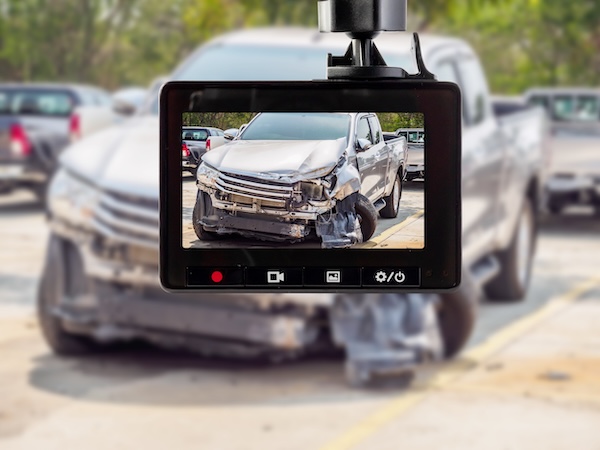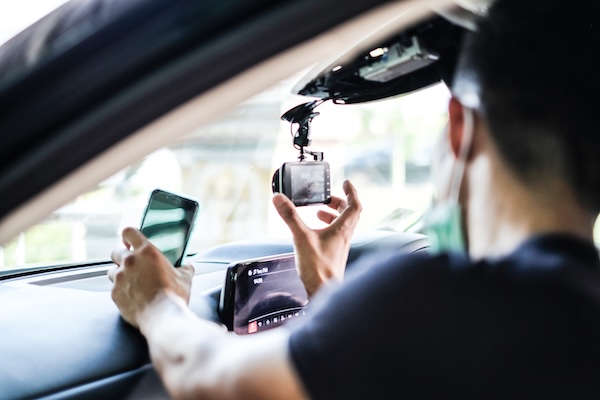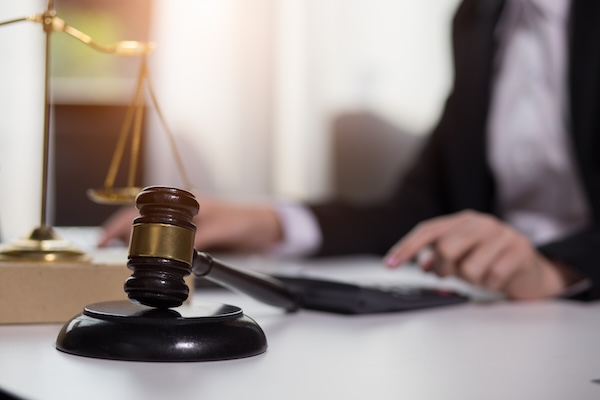The Importance of Dashcam Footage in Proving Fault in a Car Accident
Car accidents are stressful, and determining fault in a car accident can sometimes be challenging, especially when there are conflicting accounts from the parties involved. Often, the accounts of the drivers or witnesses differ, making it difficult for insurance companies and police officers to establish who is responsible for the crash. In these situations, dashcam footage can serve as a game-changer. This video evidence captures the exact events leading up to the accident and offers an objective view of what happened, cutting through any confusion or disagreement.
Dashcam footage provides clear, unbiased visual evidence that can highlight key details like the speed limit, traffic laws, and the actions of the vehicles involved. It can show whether a driver was obeying the rules of the road, making it a crucial tool when proving fault. For example, the footage can reveal if the at fault driver was distracted, speeding, or failing to yield at a stop sign. This type of evidence helps solidify your case and can be the deciding factor when determining who is responsible for property damage, medical bills, and personal injury claims.
If you’ve been involved in a crash, an experienced car accident lawyer can help you leverage dashcam footage to your advantage. With years of experience handling car accident cases, we know how important it is to gather evidence that supports your claim. We will guide you through the process of submitting footage to insurance companies and ensure that it is used effectively to achieve a fair outcome in your car accident claim. Dashcam footage can be a valuable asset in securing financial recovery and appropriate compensation for the injured party.
What is Dashcam Footage?
Dashcam footage refers to video recordings captured by a camera mounted inside or outside of your vehicle. These cameras continuously record the accident scene, capturing vital details such as road conditions, traffic signals, speed limits, and the actions of other drivers. Dashcams can be crucial in determining whether a driver was following traffic laws or if an at fault driver was responsible for a rear-end collision, a left turn accident, or even a hit-and-run.
Dashcams come in various types:
- Front-facing cameras capture the road ahead of the vehicle.
- Rear-facing cameras record what’s behind the vehicle.
- Interior cameras can show what happens inside the vehicle, including interactions with passengers or conversations.
As car accident lawyers can attest, dashcams are becoming an increasingly popular tool for drivers who want to gather evidence in the event of an accident.
How Dashcam Footage Helps in Proving Fault
Determining fault in a car accident is critical to your personal injury claim, as it directly affects your eligibility for financial compensation. Dashcam footage plays an essential role in proving fault, providing physical evidence of what happened during the accident. Here’s how dashcam footage can be instrumental in proving liability:
Unbiased Evidence
Dashcam footage offers a clear, objective view of the accident as it happened. Unlike eyewitnesses, whose accounts may be subjective or unreliable, video footage provides an impartial record of the event. The camera captures exactly what occurred at the accident location, including the actions of all vehicles involved. This can be especially useful in resolving disputes between the parties involved, where conflicting statements make it difficult to establish who is at fault.
Key Details
Dashcam footage can document crucial details that might otherwise be overlooked or difficult to verify. For example, the footage may show vehicle damage, helping to identify the point of impact and the severity of the crash. It can also capture the actions of the other driver, such as running a stop sign, speeding, or making an unsafe lane change.
Additionally, dashcams often record road conditions like wet surfaces, debris, or poor visibility, all of which may have contributed to the accident. Footage can even show skid marks, offering evidence of braking patterns, which helps determine if the driver had time to react. All of these details are key in supporting your claim and proving who is responsible for the crash.
Resolving Conflicting Accounts
After a traffic accident, the accounts of the parties involved can vary, creating confusion about who is at fault. Similarly, insurance adjusters often rely on these conflicting statements when assessing the claim. Dashcam footage eliminates this uncertainty by providing an accurate, continuous record of the events.
It can clarify misunderstandings by showing exactly what happened, whether it’s proving the other driver ran a red light, failed to stop at a stop sign, or was distracted. With dashcam footage, you have irrefutable evidence to resolve disputes and prove liability in your car accident case.
Key Scenarios Where Dashcam Footage Can Prove Fault
Certain scenarios in a car accident case benefit most from dashcam footage. These scenarios often involve clear, crucial evidence that can help determine fault and clarify what happened. Here’s how dashcam footage plays a significant role in proving liability across several common accident situations:
- Rear-End Collisions:
- Dashcam footage can show if the other driver was tailgating, distracted, or failing to stop in time.
- It can clarify whether the rear driver was following too closely or reacting improperly.
- This footage is helpful for insurance companies when assessing vehicle damage and determining liability.
- It may also capture road conditions or the actions of the other driver that contributed to the accident.
- Disputes Over Speed or Traffic Violations:
- Dashcam footage can provide proof of whether the other driver was speeding or violating traffic laws.
- This can include evidence of exceeding the speed limit, failing to yield, or running a red light.
- This is crucial when insurance adjusters evaluate the car accident claim and determine who is at fault.
- Accidents Involving Red Lights or Stop Signs:
- Dashcam footage can show whether the other driver ran a red light or ignored a stop sign.
- The footage provides confirmation of the traffic violations that caused the accident.
- This can directly influence the accident report and help establish fault in the crash.
- Hit and Run Incidents:
- Dashcam footage can capture critical details like the license plate number, make, and model of the vehicle involved in a hit and run.
- It may also capture the other driver’s face or other identifying features.
- This evidence is essential for tracking down the responsible party and filing a claim for property damage and personal injury.
- Left Turn Accidents:
- In left turn accidents, dashcam footage can show if the at fault driver failed to yield to oncoming traffic.
- It can capture the positioning of both vehicles, traffic flow, and whether the turning driver had enough time to safely complete the turn.
- This footage can clearly demonstrate whether traffic laws were violated, helping to prove which party is at fault.
Legal Considerations of Dashcam Footage
Dashcam footage can be an invaluable asset in proving fault and supporting your car accident claim, but it’s important to understand its legal implications before using it in your case. Here are some key legal considerations when it comes to dashcam footage.
Validity in Court
Dashcam footage is generally admissible in court as long as it is clear, unaltered, and authentic. For it to be considered credible, the video must not be edited in any way that could compromise its integrity. While courts are increasingly open to digital evidence, the footage must meet certain standards to be accepted as valid.
This typically includes proving that the footage has not been tampered with and that the device used to record it was working properly. However, comparative negligence laws may still apply, depending on how fault is determined between the parties involved in the crash.
For instance, if both drivers share some responsibility for the accident, the court may assign a percentage of fault to each party, which could reduce the financial compensation you’re entitled to. While dashcam footage can significantly strengthen your case, it doesn’t always guarantee that you will be deemed completely without fault.
Insurance Companies
Dashcam footage can also streamline the insurance claims process, especially when there is a dispute over the version of events. Often, insurance companies rely on witness statements and police reports to assess claims, but dashcam footage provides clear, objective evidence that can resolve conflicts or discrepancies in the testimonies given by the parties involved.
This can be particularly helpful in car accident cases where one party may be lying or misremembering the facts. The video footage can help insurance companies quickly understand what happened and determine liability more efficiently. Additionally, the footage can influence how your insurance premiums are affected.
If the footage demonstrates that you were not at fault, it can prevent your premiums from increasing and may even help lower them. Conversely, if the footage shows that you were responsible, it could lead to an increase in your premiums due to your driving record and fault in the accident.
Privacy Concerns
When using dashcam footage, it’s important to consider privacy laws, particularly regarding the recording of passengers or other individuals in the vehicle. In some states, you are required to notify passengers that a dashcam is recording.
Failing to do so can result in privacy violations or potential legal consequences. It’s essential to research the laws in your specific state to ensure that you comply with any regulations surrounding video recordings inside your vehicle. Additionally, cell phone records can play a key role in proving fault when distracted driving is suspected.
If the dashcam footage shows that the other driver was texting or engaging in other distractions at the time of the crash, their cell phone records may be subpoenaed to verify whether the driver was indeed distracted. However, obtaining cell phone records typically requires a court order or subpoena, meaning this process can take additional time and legal intervention.
Limitations of Dashcam Footage
While dashcam footage can be incredibly helpful in proving fault and supporting your car accident claim, there are also several limitations that should be kept in mind. These limitations may affect the strength of the footage as evidence and impact how it’s used in your case.
Poor Quality or Angle
One of the main limitations of dashcam footage is poor video quality or unfavorable camera angles. If the dashcam’s view is obstructed by objects like the rearview mirror, the vehicle’s structure, or even environmental factors like weather, the footage may not provide a clear view of the accident scene. Additionally, if the camera resolution is low or the footage is blurry, it can be difficult to capture important details such as the speed of vehicles involved, traffic signals, or other critical factors that can determine fault. In such cases, poor quality footage may not be sufficient to prove fault, especially if it doesn’t clearly depict the circumstances leading up to the crash.
Missing Context
Another limitation of dashcam footage is that it may sometimes miss key context that’s needed to fully understand the accident. For instance, the footage may only capture the impact of the crash but fail to show the lead-up to the accident. In some cases, important details like the actions of the other driver leading up to the crash, their speed, or any erratic driving behavior might not be visible. Additionally, dashcams typically have limited coverage, meaning that they may not capture important physical evidence such as skid marks, vehicle damage, or surrounding traffic. Missing this context can make it harder to accurately determine how the accident unfolded and who is at fault.
Challenged Footage
While dashcam footage can be a powerful piece of evidence, it can also be challenged by the other party involved in the accident. The opposing party might argue that the footage has been tampered with or edited to misrepresent the events. If the footage is not clearly time-stamped or there’s any uncertainty about its authenticity, it could be disputed in court or during the claims process.
Additionally, the other driver might claim that the footage doesn’t represent the true sequence of events or that it doesn’t account for factors outside of the camera’s view. If the footage is incomplete or unclear, it can weaken its effectiveness as evidence and potentially affect the outcome of your car accident case.
How to Best Use Dashcam Footage in Car Accident Cases
To ensure that dashcam footage is as effective as possible in supporting your car accident claim, it’s important to take the right steps immediately following the accident. By properly handling the footage and working with a legal professional, you can maximize its value in proving fault and securing the compensation you deserve. Here’s how to make sure dashcam footage is used to its full potential:
- Secure the Footage Immediately: Save the footage as soon as possible after the accident to prevent tampering. This is crucial for preserving the footage as physical evidence.
- Work with a Personal Injury Attorney: Consult with a personal injury attorney from NC Car Accident Lawyers who can guide you on how to best use dashcam footage in your car accident case and ensure it’s utilized properly.
- Provide Unaltered Footage: Always submit the unedited, raw footage to maintain its credibility and avoid any issues when proving fault. This will also make it easier for the insurance company to assess your case.
Get the Legal Support You Need for Your Dashcam Footage
Dashcam footage can be a powerful tool for proving fault in a car accident. It provides clear evidence of what happened, helping to resolve disputes and ensuring that your financial recovery can proceed smoothly. Whether you’re dealing with vehicle damage, medical bills, or the claims process, dashcam footage can make all the difference in determining fault and securing the compensation you deserve.
If you’ve been involved in an accident and have dashcam footage, don’t hesitate to contact NC Car Accident Lawyers. Our team of experienced car accident lawyers can help you leverage your dashcam footage and work with insurance companies to ensure a fair and just outcome. Contact us– we offer free consultations to discuss your case and help you get the financial compensation you deserve.
Call us today at 864-561-6247 to get the legal support you need and start working towards the recovery you deserve.







